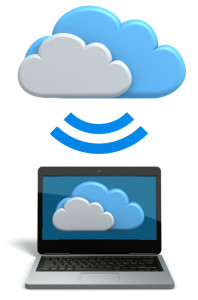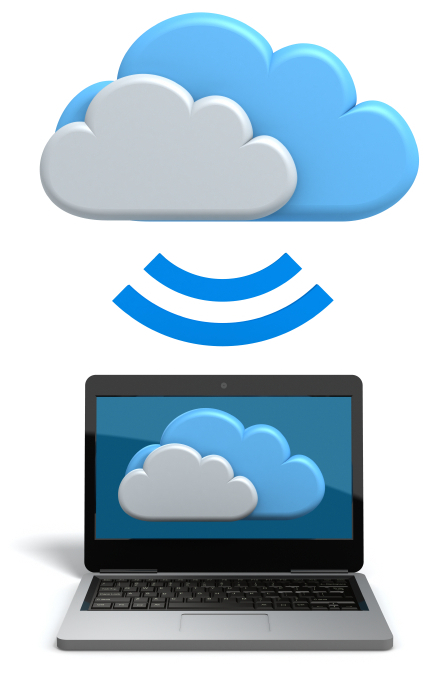Evaluating Cloud Technology Ecosystems
 2013 saw Microsoft and Google locked in a battle to control cloud enterprise services. These systems (often referred to as “cloud technology ecosystems,” due to their holistic approach to data management) leverage cloud technologies to deliver cost-effective technologies to organizations both large and small. They are a major frontier in the world of tech.
2013 saw Microsoft and Google locked in a battle to control cloud enterprise services. These systems (often referred to as “cloud technology ecosystems,” due to their holistic approach to data management) leverage cloud technologies to deliver cost-effective technologies to organizations both large and small. They are a major frontier in the world of tech.
Having implemented both the Microsoft and Google ecosystems, and supported clients using them, we’ve discovered pros and cons to both platforms. The following provides a brief rundown of what we’ve learned along the way.
What About Apple?
While Apple remains a major hardware and software provider, it is not building out a soup-to-nuts hardware and software ecosystem. For now they are not on the same playing field as Google and Microsoft when it comes to cloud enterprise services. You can love using their devices to access the ecosystems, but there is not much there for your business backend.
Microsoft’s Ecosystem
Microsoft offers operating systems for computers (Windows 7, Windows 8.1), phones (Windows Phone 8), game consoles (Xbox), tablets (Windows 8.1 and Windows 8.1RT), and a cloud application environment (Azure). The company has focused on cloud-enabling all their applications over the last couple years with the assumption that the world is looking for devices and services. As such, Microsoft has rolled out or acquired devices (Surface Tablets, Nokia Acquisition, new Xbox One) and transitioned from selling software to selling service solutions. To that end, they have acquired Skype, begun offering email services with Exchange Server, pushed toward subscription-based Office software, and built out the massive Azure cloud platform.
Microsoft is threading the needle between an integrated software-hardware platform like Apple and a born and raised Internet-only services company like Google.
Microsoft’s Office 365 platform is the flagship of its cloud efforts. It offers:
- email services with hosted Exchange
- enterprise instant messaging and screen sharing with Lync
- hosted Sharepoint for collaboration
- subscription-based MS Office (Word, Excel, PowerPoint, Outlook, OneNote, Access, Publisher)
- cloud storage with SkyDrive
Microsoft is the dominant player in network security for small businesses and as such, they have built-in features that integrate directly with their cloud service. This move shows real progress at connecting Microsoft’s traditional onsite server solutions with their cloud-hosted platforms.
These new, hosted platforms allow for routine version updates. They also facilitate the removal of technology management overhead, and give organizations of all sizes the same enterprise-class tools .
Microsoft’s hope is to fully connect their devices to the cloud to create a unified experience that users can interact with on their computer, tablet, mobile phone or television.
Google’s Ecosystem
Google has advanced their ecosystem significantly in the last few years. After starting out as a search engine, they then grew to offer email services with gMail, and continued to push forward with Google Apps.
Google’s hope is to drive website traffic while collecting data on users to make its advertising juggernaut even more profitable. Like Microsoft, Google sees the value of a unified, cross-device experience from mobile phones (Android), to computers (Chrome books and Google Chrome Browser), and GoogleTV. They then back this up with an array of everyday services consumers love, like YouTube and Google Hangouts (let’s ignore the much maligned Google+ social media effort for now). Google also offers several other tools to drive its stickiness with the tech crowd, such as Webmaster Tools and Google Analytics.
Having been born to the Internet, Google does not face the challenge of transitioning customers to a cloud environment. Google’s model has focused on low- or no-cost solutions that drive eyeballs and advertising opportunities to subsidize the price of its services. The result is cheap, well-engineered, Internet-delivered software experiences that have caught on quickly.
Summary Chart on Ecosystems

How to Choose
Microsoft is likely best for you if:
Your organization is currently a Microsoft Office shop, and the platforms are familiar to your workforce.
You need to better integrate an existing Windows security infrastructure (Active Directory).
You have a team of developers familiar with .Net and other Microsoft programming languages.
Google is likely best for you if:
You are a fresh startup that is tight on cash, with a relatively young labor force.
You value real-time editing of documents for team collaboration.
You can count on always having a strong Internet connection.
You are primarily an Apple hardware shop.
You need to collaborate with many outside parties.
In general, Google solutions are less expensive and offer reasonable integration points with a series of other aspiring cloud service providers (like certain accounting, project management, and CRM solutions).
Microsoft offers a more holistic series of enterprise class solutions through tools that are generally more familiar to your existing workforce. It offers a large bevy of value-added resellers and system integrators to implement and support their solutions. They are also quickly transitioning other enterprise-class solutions like their CRM Dynamics platform and Microsoft Project to their cloud platform.
No matter your choice, every business stands to benefit from the evolution of highly competitive cloud services. Now, more than ever, small businesses can keep pace with their Fortune 500 competitors.
Reference links:


